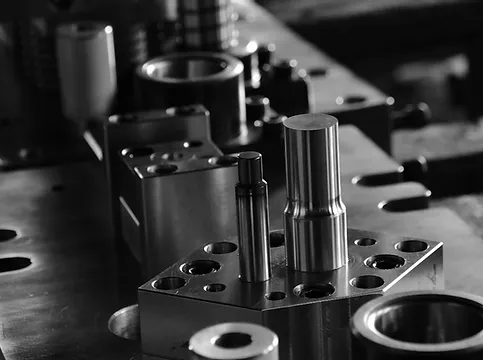Uncategorized
Carbide inserts: the best way to select them (part 2)
Carbide inserts: the best way to select them (part 2)
Continuing with our series on how to pick the best carbide inserts, we will now dive into the failures and the reasons why this tends to happen. If you wish to skip the reading and go directly to action, visit our official store. If you don’t, relax and continue reading.
Carbide inserts: The Tool Failure Analysis
The predominant failure conditions of carbide inserts used in moldmaking is thermal cracking, followed by erosion around the cracks, build-up of workpiece material (analogous to material welding on the edges of carbide inserts) and eventual edge chipping. Workpiece materials like H11, H13, D2 and A2 tool steels promote thermal cracking and edge chipping of tools.
Thermal cracking is accentuated by the use of coolants and high feedrates during machining. Conventional CVD-coated carbide tools often are limited in combating thermal crack resistance. Conventional CVD coatings like TiC, TiCN and TiN provide limited thermal barrier properties but have high stability, oxidation resistance and chemical resistance. Al2O3 or AlO3/ZrO2 composite oxide coatings provide enhanced chemical wear resistance as well as thermal barrier protection. The compromise with these types of coatings is their limited fracture toughness properties. Tensile stresses are typically higher in high temperature (~1000’C) CVD coatings.
Moderate temperature (~850’C) multi-layer MTCVD coatings like TiCN or ZrCN have lower magnitude of tensile stresses and are better suited to combine the properties of fracture toughness, abrasive wear resistance, chemical wear resistance and thermal crack resistance when used in combination with oxide coatings (see Figure 3).
In the last five years, there has been a tremendous advantage in using PVD coatings based on TiAlN compositions. The high oxidation resistance, high chemical stability, high hot hardness and enhanced thermal barrier properties of these types of PVD coatings facilitates their use in high-speed (1,000 to 1,500 sfm) dry machining applications. Without question, machining productivity is enhanced with the use of PVD TiAlN coatings (see Figure 4).
Now you know the worst case scenarios for your selections. Make sure to apply this knowledge so you can improve your tooling and cutting processes.
Remember you can always contact us for advisory. Our specialists and engineers are always willing to help. Just get in touch with us.
See you in our next part, where we will go hands on with the most exciting part: the selection of the carbide inserts according to the mold materials!

